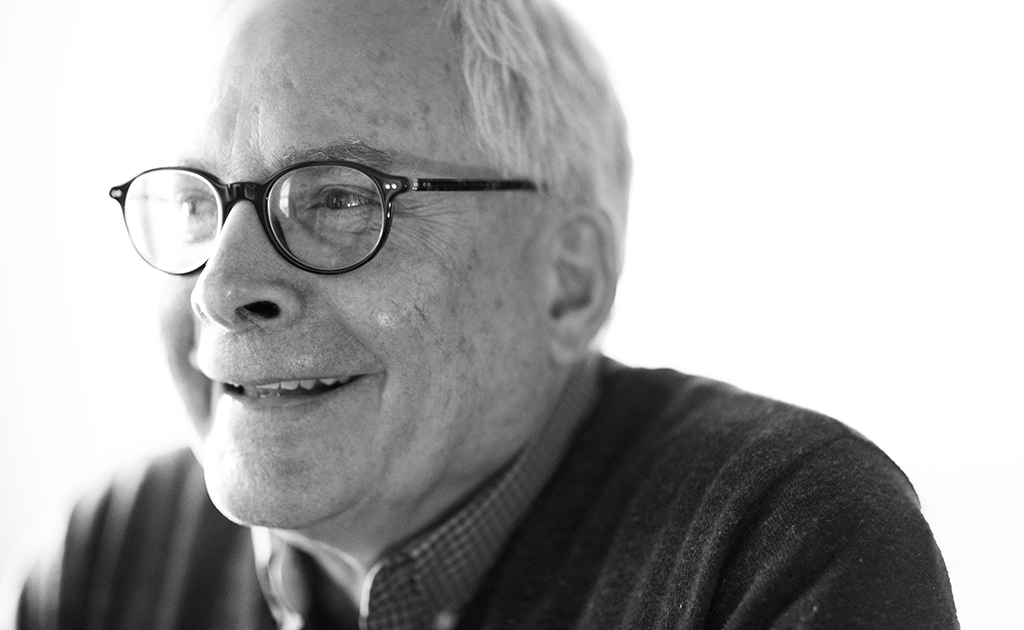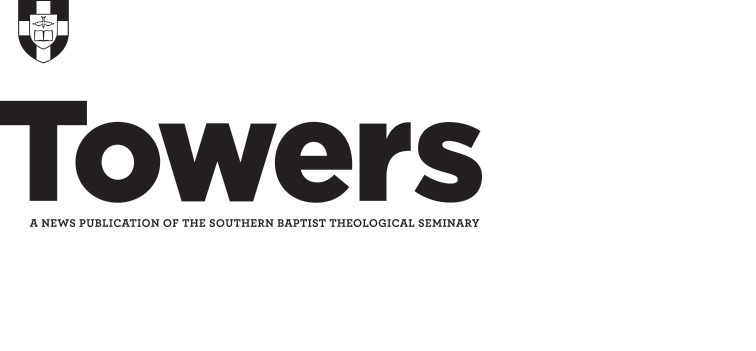EDITOR’S NOTE: Below, Gregg R. Allison, professor of Christian theology at Southern Seminary, talks with Towers writer RuthAnne Irvin about his new book, MultiChurch: Exploring the Future of Multisite.

RAI: For those who haven’t picked up the book yet, can you explain the difference between multisite and multichurch, or if you use those terms interchangeably?
GA: They have different meanings. Multisite is the structure most people are familiar with in terms of video venue or high centralized control, with little decision-making happening at the local campuses. It’s all run by the central, main structure. Wherever you go, no matter what campus you go to, it looks pretty much the same. Multichurch insists on more autonomy for the local congregations, more decision-making, live preaching, local elder teams or pastoral teams, and contextualization. Multichurch consists of independent churches that become interdependent through collaborative or collective efforts.
RAI: Why did you and Brad House decide to write this book?
GA: In 2006, Zondervan published a book called The Multi-Site Church Revolution, and that was the first book-length treatment of this phenomenon called multisite. A couple years ago, after 10 years of that book’s existence, Brad and I had a conversation about a second-generation, more mature reflection on the multisite phenomenon. The evolution at Sojourn was going on, so we’d moved from what we’d call a multisite church to what we call multi-church. So we wanted to tell our story, provide language for people in the multisite movement, and talk about how to move and have different expressions of multisite.
RAI: Why should Christians care about this and how can we do a better job when thinking through starting a church or planting a church, and incorporating creativity and a theology of beauty?
GA: God himself is glorious and beautiful. He’s created a world and assessed it as very good. The Garden of Eden contained plants with food that were not only good for eating and nutrition, but also satisfying to the sight; they were beautiful. The church historically has emphasized structure that highlights the transcendence of God or the presence of God, through things like stained glass windows where light shines through, or three windows emphasizing the Trinity. With church planting or any existing church, we try to go beyond mere utilitarianism, beyond pragmatics and function, and ask what can we do — even simply — to communicate and portray the beauty of God through our buildings, through our structures. What’s wrong with having a polity, church government, programs, and structures that are beautiful and not just utilitarian?
RAI: In your “Landmarks” chapter, you write that “When we see the creative character of God in the innovative impulse to advance his kingdom, we become encouragers and counselors rather than critics.” Can you explore why that’s important when thinking about multi-churches?
GA: In many of our circles, novelty and innovation are bad words. I understand why. There’s bad novelty. There’s novelty for the sake of novelty’s sake. There’s innovation just to be different. But if you take novelty and innovation in terms of creativity, we’re saying not to be different just to be different but are there ways for the church to be and to act in this world that reflect the character of God, disciple the church’s people, and engage with non-believers in a way that’s refreshing, still biblical, contextual, still gospel-centered. We see multichurch as a creative way of being the church and being missional by saying rather than come to a central big building, what if we take the church and plant different congregations to reach a city? Each congregation looks different, feels different, has a different sense because it’s contextualized. As we lead people to the Lord and begin to disciple them, we’re not asking to leave their neighborhood, drive 25 miles or 15 minutes, but we have a congregation close to them. So those are the kind of creative things that we’re looking at.
RAI: Did you write the book as a response to certain problems you see with multisite? What were some other issues you wanted to address?
GA: Probably the number one criticism of multisite is the use of video. The vast majority of multisite churches use video to one degree or another. Video delivers a virtual presence. The virtual is important. Presence is important. The presence of the pastor preaching the Word, celebrating baptism and the Lord’s Supper. Also seeing the fall of high-profile, multisite pastors reminded us that any leader can fall, so it’s not just multisite that prompts people to fall. A pastor in a church of 35 people can fall for many different reasons, so it’s not the structure itself. But we wondered if there something in the structure that contributes to propping up a pastor, filling his head with pride. What if we had a structure where you’ve got three, four, five congregational pastors who meet regularly, love one another, pray for one another, hold one another accountable, really mix it up when there’s problems — what about a creative solution like that? Hence, multichurch.
RAI: How do you engage with people who disagree with you on your view of multichurch?
GA: The notion that the church has to be one service where all the people are able to gather together is based on a faulty understanding of the Greek word ekklesia. The church in Jerusalem was a multichurch. All the people, or as many as could, gathered in the temple for worship, for hearing the Apostles’ teaching, for prayer, for giving, and evangelism, but they also gathered in the homes of Christians, which weren’t small groups of the church in Jerusalem. They were the church of Jerusalem, and what was going on in the temple was going on in these congregations. I think we have a biblical precedent, and that this was true in the early church: There was a church in Corinth, a church in Philippi, a church in Thessalonica, a church in Rome, and each were spread out into these various Christians’ homes, which made the congregations of the church. So we have a basic disagreement on the approach to determining what a church should be.
RAI: Are there any misconceptions about a multi-church model that you like to teach about or tell people about when they come to you to ask you questions? Misconceptions that you often hear or that you have to wrestle with and deal with?
GA: Misconceptions: it’s the sexy thing to do, it’s novel, it’s creative. It’s not sexy; it’s a mess. It’s really hard. I think we help people have realistic expectations. Other misconceptions: it’s promoting a brand or building a platform. I know the four congregational pastors at Sojourn regularly talk about not being a brand and not developing something that could be taken on the road as a national phenomenon. Another misconception is that we’re saying this is for every church; it’s not. We would not counsel the vast majority of churches to go this direction. There has to be the proper context.
RAI: How would a small church move in their mindset toward multichurch, or partner with other churches in order to reach their neighbors better?
GA: Partner with other churches. For impacting the city and the region and the world, small churches collaborating with other small churches can do a whole lot of evangelism and missions. It’s really hard to do it alone. Our Lone Ranger-syndrome, our extreme autonomy, our rejection of authority and accountability, make a recipe for disaster. I think that’s what we’re seeing in a lot of small churches. They refuse interaction with anybody else, any other churches. Brad and I think that a very high, biblical value is interdependence, not independence. It’s hard to find autonomy and independence in the Bible. But interdependence definitely is emphasized. Small autonomous, independent churches can connect together and covenant together to be interdependent to reach a city, a region, part of the world.
RAI: How do you counsel pastors and churches that want to move — if they have a pillar church model — to multichurch, or if they’re multisite and want to move to multichurch?
GA: Talk with Brad and me. Expect it to be extremely hard to do, and it’s messy. You really need to think carefully about it. A lot of churches go to multisite just for pragmatic purposes when they run out of space. It’s often just the need to expand because of growth. Growth is a great thing. We would encourage them not to do it for pragmatic purposes, but think biblically and theologically about it and have theological and biblical convictions about it.




